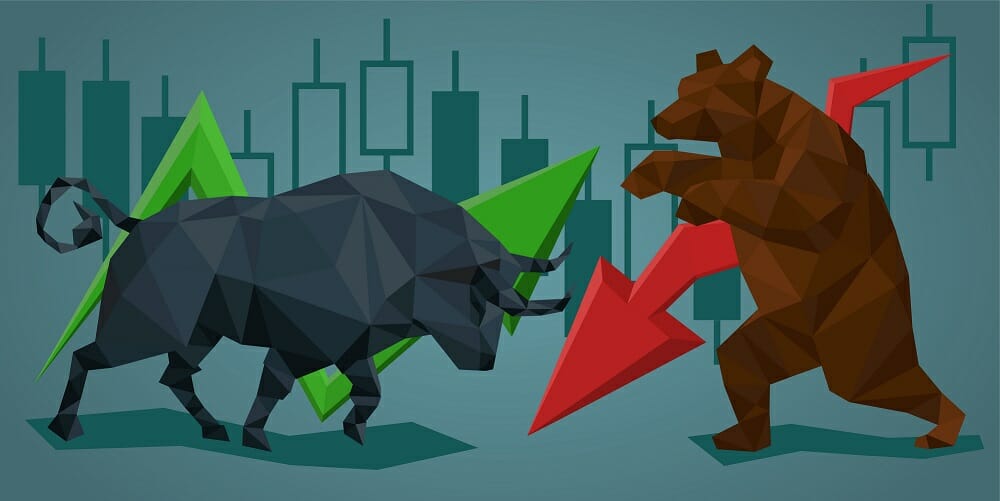SOURCE: https://corporatefinanceinstitute.com/resources/knowledge/finance/bullish-and-bearish/
Stampeding bull, hibernating bear
CRYPTOCURRENCY: Definition of Bullish and Bearish
Definition of Bullish and Bearish
Professionals in corporate finance regularly refer to markets as being bullish and bearish based on positive and negative price movements. A bear market is typically considered be a 20% price decline from the peak, and a bull market is considered to be a 20% recovery from the bottom.
Bullishness is a sentiment or mindset adopted by a trader, thinking securities will move up in price. The opposite of this term is Bearishness, which is the mindset that securities and markets are moving down in price.

Term Usage
When a trader says he is bullish on Apple Inc. (AAPL) shares, it means the trader thinks AAPL shares will move up in the future.
The terms can also be used to describe a trend or movement that has already happened. For example, if APPL shares have made a drastic move from $200 to $100 after an earnings call, one may say that the stock has been bearish for the week.
While the most common use of the term is in the stock market, these terms do not necessarily apply only to stocks. The terms can be used when thinking about investments in the real-estate sector, the commodity markets, and others.
Hawkish and Dovish
When discussing changes in interest rates, people don’t use the term bullish. Instead, the term ‘hawkish’ is used. When labeling a group of Central Bank officials, for example, who are inclined to raise the interest rates, they are called ‘hawkish’ and not ‘bullish’. On the other end, the relevant equivalent of ‘bearish’ would be ‘dovish’.
Changing views
These terms are just sentiments, and a trader can shift from bullish to bearish in the blink of an eye when they feel the market situation has changed moderately. When an economist is bullish on the general economy, it does not necessarily mean prices of instruments will move up.
A good example of this was the subprime mortgage crisis in 2008. Research analysts mentioned strong bullishness citing that the Dow Jones Industrial Averages was ready to reach a record high, but instead, prices fell. Persistently, analysts kept the bullish view, until the situation was gloomy enough for them to shift into a bearish view.
Additional resources
Thank you for reading this guide to bullish and bearish markets. To continuing learning and advancing your career, CFI highly recommends these additional resources:
No comments:
Post a Comment